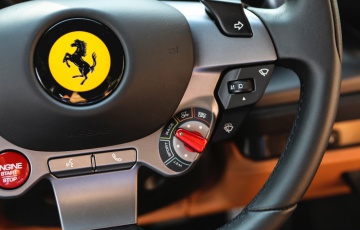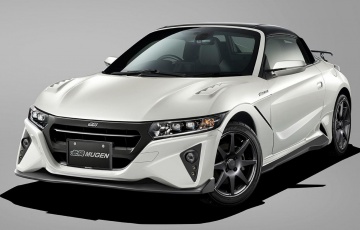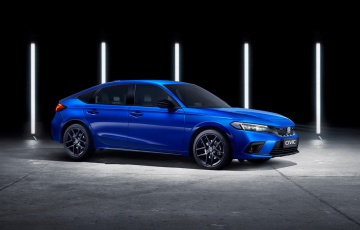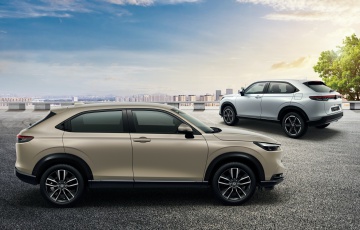Honda NSX: a 458 at half the price?
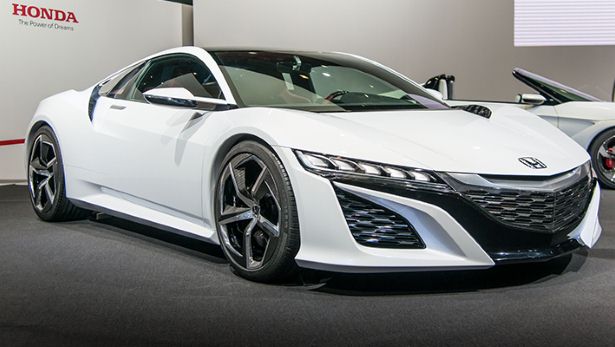
The original Honda NSX was Senna's supercar. Even though the great man spent barely a day at Suzuka with a prototype, the association remains powerful enough to secure the NSX's place in the supercar hall of fame.
That and the fact that it was bloody marvellous to drive, and arrived just as Ferrari was badly fumbling the ball.
Now, almost 25 years later, the new NSX is rapidly gathering momentum, and it has the Ferrari 458 Italia squarely in its sights.
It'll pack more technology, offer similar sky-scraping performance, but cost about half the price. These guys clearly like a challenge.
In fact, they like a challenge so much that they decided that the car's original configuration - a transverse engine layout with reworked Acura RLX ancillaries - simply wasn't going to do the job they and us expected the new NSX to do.
So they switched to a longitudinal set-up, and the engine now sits lower in the chassis, benefitting thermal management, and allowing them to run a dry sump. Basically, it's better for overall packaging, and gives the platform greater flexibility in the future. It also suggests that Honda's engineers still rule over their bean counters. We like that.
The new NSX will be something of a technological powerhouse. Though the exact specification is still a matter for conjecture, topgear.com saw an engineering model at Tochigi earlier this week, and spent an hour downloading Honda's global large car project leader, Ted Klaus, at the Tokyo show today. So we can start putting the picture together with some authority.
The engine will most likely be a direct-injection, mid-mounted, twin-turbocharged 3.5-litre V6, with a wider V-angle than previous Honda units of that configuration. The chassis and body is a mix of aluminium, high tensile steel and composites, although there will be some carbonfibre components in there, too.
Honda has just launched impressive all-new seven and eight-speed dual clutch gearboxes, and one or other of these will appear in the new NSX. There will be no manual transmission; despite the excellence of their 'boxes over the years, it was never even a consideration. Honda is targeting a kerb weight of around 1400kg. Ambitious.
'NSX stands for "new experimental sports car", so you'd expect us to push a few boundaries,' Klaus tells us. So, like the LaFerrari, McLaren P1 and Porsche 918 Spyder, the NSX is a hybrid supercar.
This one has no fewer than three electric motors, one on each of the front wheels and a third mounted fairly far back at the rear between the engine and transmission. The battery pack sits in front of the engine and behind the seats. That's a lot of extra hardware to package and manage.
Power output remains a closely guarded secret for now, but if three electric motors and a new bi-turbo V6 add up to anything less than 500bhp, we'll be disappointed. (The new RLX sport hybrid has a 310bhp 3.5-litre V6, augmented by two 27kW electric motors and one 35kW motor. So add two turbos, beef up the motors, and do the math.)
Klaus has an engineer's zeal when it comes to batting back the purist's gripes in the inevitable weight and complexity versus benefit debate. 'I race a single-seater with my father,' he says, 'and his definition of good is something that's ultra lightweight. I get that.
But what if I made something that was more complex but that felt lightweight and had the linearity of response associated with something lightweight? I know that there's some scepticism about the idea of a performance hybrid. But I promise you this is about engineering and physics and not marketing.'
Besides, the electric motors on the NSX do a fascinating job. Honda uses them in its SH-AWD system, effectively a form of torque vectoring that's newly applied to the Acura RLX. On that car, the motors act on the rear wheels, and enable independent control of the torque flow to the wheels on either side.
In the new NSX, the motors will tailor the car's handling by using regenerative braking to retard the inside front wheel and accelerate the outside one during cornering. TG.com got to try the RLX on a twisty little circuit, and the effect it has on the car's behaviour is amazing.
Enter a corner too fast, with the power still applied, and the system adjusts the car's line so that you maintain the optimum trajectory. Throttle off abruptly, and the back end gets entertainingly mobile before reining itself in without the need for any major driver input, and on you go.
Obviously, it has a different remit on the NSX, but it's undoubtedly a trick bit of hardware. Klaus describes it like this.
'Don't think of the car as front or rear-wheel drive, think of it as active-wheel drive. In fact, it's proactive. Other systems can only deal with two phases, but this is a three-phase set-up and works during acceleration, braking, and cornering.
The car should do what the driver wants. Its responses should always be in phase. If the hybrid technology makes the driver even more central to the process, that's going to work for the purist, right? It's about fun that's not based on sweat.'
Klaus and his team are also working hard to ensure that the new NSX, like the old one, is user-friendly. 'The NSX had humps in the front wings,' he says, 'which helped you place it on the road more accurately. And you could see out of it properly. It's important to me that the new one is as accessible as possible.
We have this idea of the "human support cockpit". It starts with visibility, and optimising the driving position. I want the controls to have the right sensitivity, and for the paddle shifters to feel good. But it also means that the centre console won't be made of a hard material. Some of the NSX's rivals will actually bruise your knees during hard cornering. That I don't get.'
Honda has invested EU45m in a new Performance Manufacturing Centre in Marysville, Ohio, where production on the car will start in 2015. Suspicions that the NSX's apparent US-centric focus will stunt its dynamism draw a wry smile from Klaus.
Actually, I understand and respect people who have those concerns. The car's powertrain was developed in Japan, and its styling made feasible in our LA studio. And remember that the original NSX was Honda's first global car. We've taken the best people in the company to do this car, and we're an extremely tightly focused unit. We're also using its development to attract new suppliers. It's driving everyone forward.'
STORY Jason Barlow






